Top 5 Weird Facts About Mysterious Uranus: Photos
Weird Facts
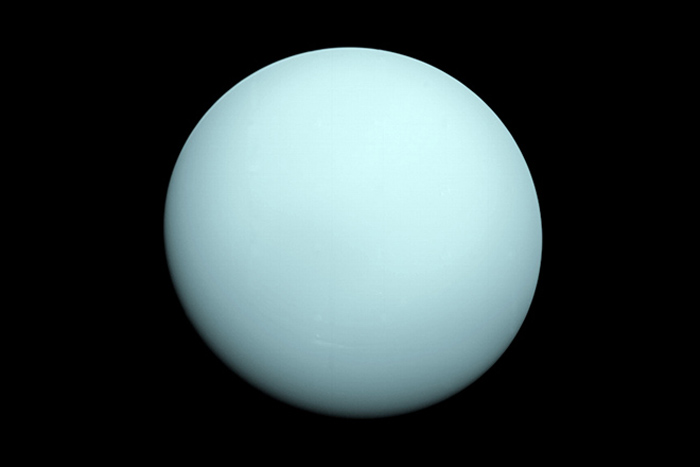
When William Herschel first spotted Uranus with a telescope on March 13, 1781 the discovery opened up the solar system. There were planets beyond what the ancients knew! There was a planet that takes a human lifetime (84 years) to go once around the sun! But for 200 years, Uranus was just a point of light in a telescope's eyepiece and we could see few details.
Uranus has a weird rotation and tilt
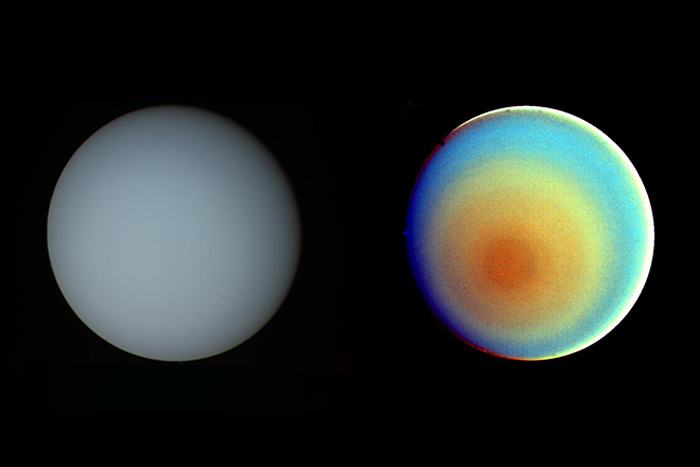
Something big might have crashed into Uranus in the past, because the planet is rotating on its side. Its magnetic north and south are also way different than its polar north and south. All told, this causes some bizarre seasonal effects. Imagine a world where, for example, the south pole is pointed at the sun while the north pole is shrouded in darkness. That was the situation Voyager 2 encountered when visiting in 1986.
Image: Clouds at the south pole of Uranus seen in false color (right) compared to what you can see with your eyes. Picture by Voyager 2.
Uranus had storms happen at an unexpected time
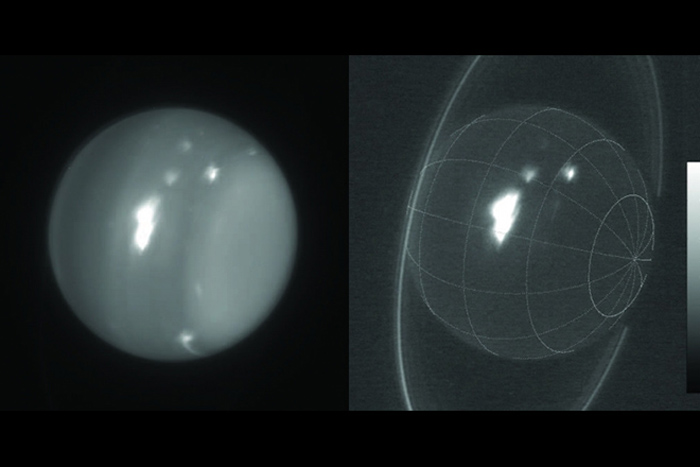
When Uranus got to its closest approach to the sun in 2007, astronomers expected that there would be more storms marring its normally calm surface. To astronomers' delight, the stormy activity actually extended at least as long as 2014. "Why we see these incredible storms now is beyond anybody's guess," said co-investigator Heidi Hammel of the Association of Universities for Research in Astronomy, in a statement. At the time, astronomers said that more studies of outer planet atmospheres would be needed to better understand what was happening.
ANALYSIS: Extreme Storms Erupt on Uranus, Baffling Astronomers
Image: Rare storms on Uranus captured by the Keck II telescope on Aug. 6, 2014.
Uranus has rings
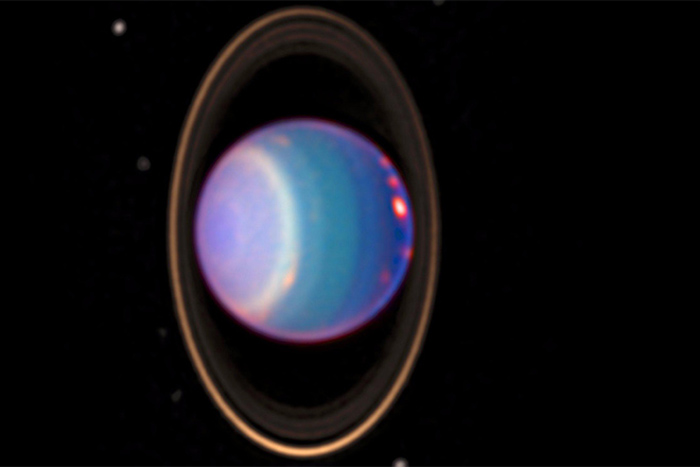
Uranus' rings were actually found by sharp-eyed astronomers in 1977, who watched the planet pass in front of a star (SAO 158687). They noticed the light of the star flickering on and off, indicating that something (the rings) was blocking the light as the planet passed through. There are now more than a dozen known rings found around the planet, from a combination of ground observations, Voyager 2's flyby and the Hubble Space Telescope. The circumstances behind their formation are poorly understood, however.
Get the Space.com Newsletter
Breaking space news, the latest updates on rocket launches, skywatching events and more!
Image: The major rings of Uranus are shown along with a false-color image of the planet. This was taken with the Hubble Space Telescope in 1998.
Uranus isn't the farthest planet, but it's the coldest
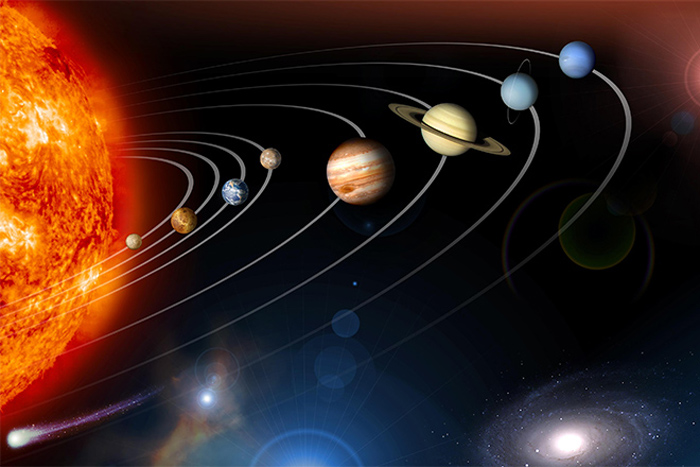
As many schoolchildren know, Uranus is an outer solar system planet. Neptune is the next known planet lying beyond its reach, and there may possibly be another large planet even further away (nicknamed "Planet Nine" by the astronomers who proposed its existence). Surprisingly for planetary scientists, it turns out that Neptune is not the coldest planet known in our solar system; it's Uranus. That's because Uranus has no internal heat source to supplement the heat of the sun.
Image: Artist's impression of the solar system (not to scale). Uranus is the second-furthest planet from the sun.
One of Uranus' moons looks like an abstract painting
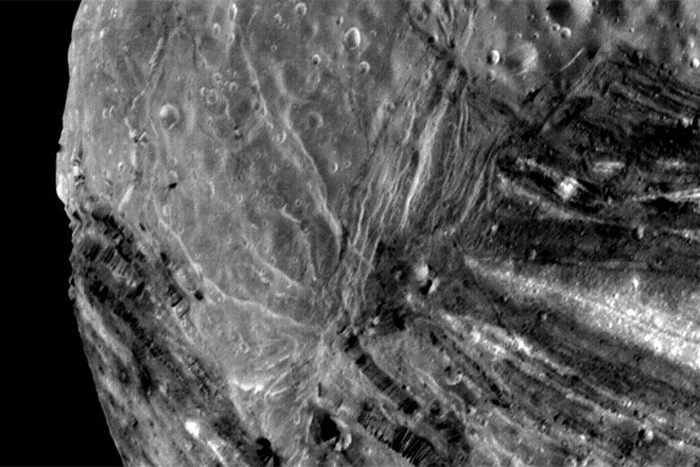
NASA once used the Shakespearean-like phrase "tempestuous" to describe the geological history of Miranda. Only makes sense given all features in the Uranus system are named after Shakespearean characters. American planetary astronomer Gerard Kuiper found the moon in 1948, but Voyager's flyby in 1986 revealed some geological stuff we are still struggling to explain. In 2008, NASA wrote that the moon was likely fractured up to five times during its history. The result is a mishmash of fresh regolith and older, cratered surfaces.
Image: A close-up of Uranus' moon Miranda taken by Voyager 2 on Jan. 24, 1986.
Join our Space Forums to keep talking space on the latest missions, night sky and more! And if you have a news tip, correction or comment, let us know at: community@space.com.

Elizabeth Howell (she/her), Ph.D., was a staff writer in the spaceflight channel between 2022 and 2024 specializing in Canadian space news. She was contributing writer for Space.com for 10 years from 2012 to 2024. Elizabeth's reporting includes multiple exclusives with the White House, leading world coverage about a lost-and-found space tomato on the International Space Station, witnessing five human spaceflight launches on two continents, flying parabolic, working inside a spacesuit, and participating in a simulated Mars mission. Her latest book, "Why Am I Taller?" (ECW Press, 2022) is co-written with astronaut Dave Williams.









